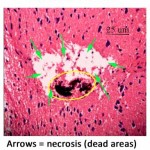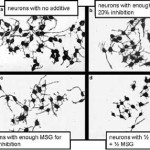This gallery contains 1 photo.
Science. 207(4438): 1489-90. Red 3 was applied to nerve synapses in the frog, producing an irreversible, dose-dependent increase in neurotransmitter release. The author suggested this may be useful for studying neurotransmitters, but that the use of Red 3 as a … Continue reading





























